Identifying Early Nail Fungus Symptoms
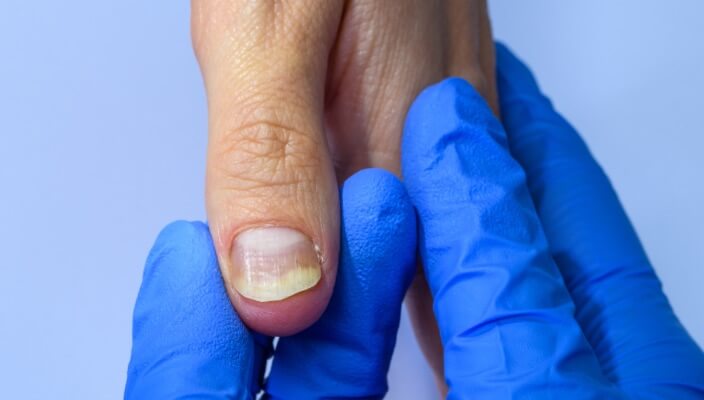 Have you noticed a change in the color or texture of your toenails? At Pinnacle Dermatology, we understand that early detection of nail fungus is key to preventing more serious complications. This article will guide you through the initial symptoms of nail fungus, including discoloration and thickening, which could save you from the need for medication or surgery down the line. We'll discuss how this common condition can impact your overall foot health and share effective prevention strategies. If you're worried about an injury leading to fungal issues, we'll also explain when it's time to seek professional medical advice. Stay informed and keep your feet healthy with our expert insights.
Have you noticed a change in the color or texture of your toenails? At Pinnacle Dermatology, we understand that early detection of nail fungus is key to preventing more serious complications. This article will guide you through the initial symptoms of nail fungus, including discoloration and thickening, which could save you from the need for medication or surgery down the line. We'll discuss how this common condition can impact your overall foot health and share effective prevention strategies. If you're worried about an injury leading to fungal issues, we'll also explain when it's time to seek professional medical advice. Stay informed and keep your feet healthy with our expert insights.
Recognizing the First Signs of Nail Fungus
At Pinnacle Dermatology, we understand that early detection is key to effectively managing skin health issues, including nail fungus. This common infection often begins as a white or yellow spot under the tip of your fingernail or toenail. As the fungal infection goes deeper, nail discoloration, thickening, and crumbling at the edge can occur.
Our team emphasizes the importance of recognizing subtle changes in nail texture and color. These changes may signal the onset of a fungal infection, a disease affecting the nail's integrity. Nails may become brittle, distorted in shape, or separated from the nail bed, indicating the need for a professional assessment.
Identifying the health of your nails is crucial: a glossy, smooth, and uniform appearance typically signifies good nail health. Conversely, the presence of dullness, ridges, or spots can be early indicators of a fungal infection. To better understand these signs, consider the following:
- Discoloration, ranging from white to yellow-brown.
- Thickening of the nail, making it difficult to trim.
- Brittle, ragged, or crumbly nail edges.
- A distorted nail shape or a nail that lifts away from the nail bed.
Should you notice any of these symptoms, we at Pinnacle Dermatology recommend seeking professional advice promptly. Early intervention can prevent the spread of the infection and safeguard your overall health, ensuring the best possible outcome for your skin and nails.
Examples of Nail Fungus
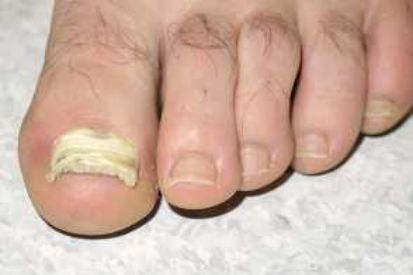
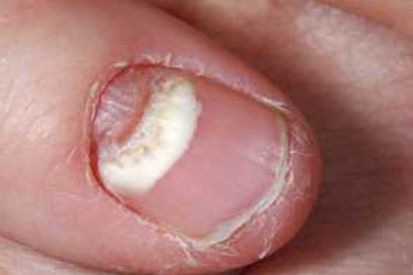
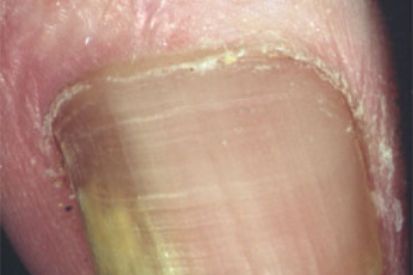
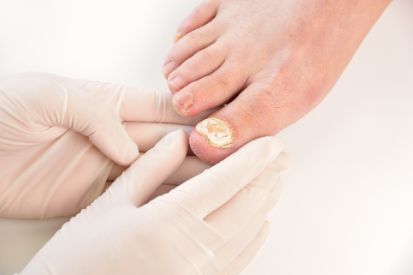
Understanding How Nail Fungus Affects Skin Health
At Pinnacle Dermatology, we're keenly aware that onychomycosis, commonly known as nail fungus, can significantly impact skin health. This condition, if left untreated, can lead to further complications, including secondary bacterial infections. It's essential to recognize the early symptoms and understand that nail fungus is more than a cosmetic concern; it's a health issue that requires attention.
Topical medication is often the first line of defense against mild to moderate fungal infections. These antifungal treatments are designed to be applied directly to the affected nail, targeting the fungus at its source. However, it's crucial to start treatment early to prevent the fungus from spreading and causing more severe damage to the nail and surrounding skin.
Understanding the difference between nail fungus and other conditions like psoriasis is vital for effective treatment. While both can cause nail changes, psoriasis is an autoimmune condition that requires a different approach. Accurate diagnosis by a dermatology professional is the first step to recovery:
- Observation of nail changes and symptoms.
- Professional evaluation to differentiate between fungal infections and other conditions.
- Appropriate testing to confirm the presence of dermatophytosis or other fungi.
- Personalized treatment plan, which may include topical or oral antifungal medication.
Our team at Pinnacle Dermatology emphasizes the importance of early detection and treatment of nail fungus to maintain optimal skin and nail health. By addressing onychomycosis promptly, we help prevent the spread of the infection and preserve the natural appearance and function of your nails.
Common Causes and Risk Factors for Developing Nail Fungus
Understanding the factors that contribute to nail fungus is crucial in dermatology. Environmental conditions that foster fungal growth, personal hygiene practices, underlying health issues, and exposure in communal areas like gyms and pools all play a role. We at Pinnacle Dermatology will delve into how these elements can increase your risk and affect toe and nail health. Our expertise in laser therapy and other treatments underscores the importance of addressing these risks to maintain healthy nails.
Environmental Factors That Promote Fungal Growth
Warm, moist environments are a breeding ground for dermatophytes, the fungi primarily responsible for nail fungus. We at Pinnacle Dermatology often see cases where the immune system is compromised, creating an opening for these opportunistic pathogens. Frequent exposure to damp areas, such as public showers and swimming pools, can increase the risk of contracting a fungal infection, emphasizing the need for protective footwear in such environments.
Another factor contributing to fungal growth is the occlusive nature of nail polish and artificial nails, which can trap moisture and create an environment conducive to fungal proliferation. It's essential to allow nails to breathe and to practice good hygiene. For those already affected, treatments like terbinafine have shown effectiveness in combating the infection, but we stress the importance of early intervention to prevent the spread and worsening of the condition.
Personal Habits That Increase Risk
At Pinnacle Dermatology, we've observed that certain personal habits can significantly elevate the risk of developing nail fungus. For instance, patients who frequently walk barefoot in damp communal areas, such as swimming pools, may inadvertently expose themselves to the pathogens responsible for fungal infections. It's crucial to maintain dry feet and use protective footwear in such environments to mitigate this risk.
Moreover, neglecting proper foot care can lead to complications, including pain and the worsening of a fungal condition. We advise our patients to be vigilant about their nail care routine, as practices like sharing nail clippers or tight-fitting shoes can create an ideal scenario for fungal growth. Medications like itraconazole can be effective treatments, but prevention through mindful habits remains a cornerstone of patient care in dermatology.
Underlying Health Conditions Affecting Nail Health
At Pinnacle Dermatology, we recognize that certain underlying health conditions can elevate the risk of developing nail fungus. For example, individuals with a compromised immune system, such as those with diabetes or HIV, are more susceptible to yeast infections that can affect nail health. These conditions can disrupt the natural balance of flora on the skin, leading to an increased risk of fungal infections. It's essential to manage these health issues proactively to maintain skin and nail integrity.
Another critical aspect we consider is the impact of chronic skin conditions like psoriasis or eczema, which can predispose patients to nail fungus. The presence of these skin conditions often leads to an itchy, compromised skin barrier, making it easier for fungi to take hold. In such cases, antifungal medications like fluconazole may be prescribed to combat the infection. We advise patients to seek treatment at the first sign of symptoms to prevent the condition from worsening:
| Condition | Impact on Nail Health | Recommended Action |
| Compromised Immune System | Increased susceptibility to fungal infections | Proactive management of underlying health issues |
| Chronic Skin Conditions | Compromised skin barrier leading to higher infection risk | Early intervention with antifungal treatments |
Exposure in Public Places Like Gyms and Pools
Our experience at Pinnacle Dermatology has shown that frequenting public places like gyms and pools can significantly increase the risk of contracting nail fungus, particularly the common dermatophyte Trichophyton rubrum. These environments, often warm and humid, are ideal for fungal growth. We advise our patients to wear protective footwear in communal showers and to be cautious about hygiene practices, especially after a pedicure, to minimize exposure to potential pathogens.
Moreover, while topical antifungal treatments are effective against early nail fungus, prevention is always preferable. We remind our clients that the same vigilance applied to preventing skin cancer by avoiding excessive sun exposure should be applied in these public spaces to protect against fungal infections. Ensuring your feet are thoroughly dried after a shower and avoiding sharing towels can serve as simple yet powerful practices to maintain nail health.
Prevention Strategies to Protect Your Nails and Skin
We at Pinnacle Dermatology advocate the use of tea tree oil as a preventative measure for nail fungus. Its natural antifungal properties can help maintain nail health, especially when applied regularly after washing and thoroughly drying your feet.
When it comes to hair removal around the nail area, we recommend exercising caution to avoid creating minor cuts that can serve as entry points for candida and other fungi. It's essential to use clean, sanitized tools and to treat any abrasions promptly.
Walking barefoot in public areas is a common way to contract nail fungus. We urge our patients to wear sandals or flip-flops in communal showers, locker rooms, and around pools to reduce direct contact with potentially infected surfaces.
For those with rosacea or other skin conditions that may affect the feet, we emphasize the importance of a tailored skincare routine. This includes using gentle, non-irritating products and keeping the skin barrier intact to defend against fungal infections.
When to Seek Professional Medical Advice
When symptoms such as increased pain, redness, or swelling suggest a spreading infection like cellulitis, especially in individuals with diabetes, it's time to seek our professional medical advice at Pinnacle Dermatology. We're equipped to offer advanced treatments, including ciclopirox and efinaconazole, and can expertly diagnose nail fungus, even when obscured by artificial nails. Our subsequent discussions will delve into the critical signs of progression, the array of medical interventions available, and the diagnostic expertise we provide.
Symptoms Indicating a Spreading Infection
When we at Pinnacle Dermatology observe symptoms such as persistent soreness, redness, or swelling around the nail area, these may indicate a spreading infection like candidiasis or cellulitis. It's particularly concerning if the infection appears to be resistant to over-the-counter treatments. In such cases, consulting a physician or podiatrist becomes imperative to prevent further complications, including those affecting the liver or other internal organs due to the spread of trichophyton or other fungi.
Should there be a noticeable foul odor, discharge, or a sudden change in nail color or texture, these are clear signs that the infection may be advancing. We advise immediate medical attention to assess the extent of the infection and to discuss potential treatment options:
| Symptom | Possible Condition | Recommended Action |
| Persistent soreness, redness, swelling | Spreading infection (Candidiasis, Cellulitis) | Consult a physician or podiatrist |
| Foul odor, discharge, sudden color/texture change | Advanced fungal infection | Seek immediate medical evaluation |
Available Medical Treatments and Procedures
Upon recognizing the persistent symptoms of nail fungus, we at Pinnacle Dermatology advise exploring a range of medical treatments and procedures. These may include prescription-strength topical antifungals, which are applied directly to the nail, or oral medications that target the infection systemically. For chronic conditions where standard medicine proves insufficient, advanced options such as laser therapy or surgical nail removal may be considered. These interventions aim to eradicate mold and fungus, restoring the health and appearance of the nails.
Consistent skin care and regular manicures by trained professionals can also play a significant role in managing and preventing nail fungus. It's essential to ensure that all tools used during a manicure are sterilized to prevent the spread of infection. When we prescribe medication, we emphasize adherence to the treatment regimen to our patients, as this is crucial for effectively combating fungal infections and preventing their recurrence:
| Treatment Type | Function | Consideration |
| Topical Antifungals | Direct application to affected area | Used for mild to moderate infections |
| Oral Medications | Systemic treatment of infection | May be required for more severe cases |
| Laser Therapy/Surgery | Removal of infected nail tissue | Considered for chronic, resistant infections |
| Professional Manicures | Preventative care and maintenance | Tools must be sterilized to prevent infection |
How Dermatologists Diagnose Nail Fungus
At Pinnacle Dermatology, we're adept at diagnosing nail fungus, scientifically known as tinea unguium, which is often confused with other conditions like tinea cruris or nail disease related to cancer. To determine the precise cause and appropriate cure, we may perform a physical examination, take nail clippings for laboratory analysis, or recommend a blood test to rule out systemic issues. These diagnostic steps are crucial in developing an effective treatment plan tailored to each patient's unique situation.
Our approach to identifying nail fungus involves a keen eye for detail and a comprehensive understanding of dermatological symptoms. If a patient presents with nail changes that suggest a fungal infection, we at Pinnacle Dermatology promptly initiate diagnostic procedures. These may include using a potassium hydroxide (KOH) test to visualize the fungus or a culture test to identify the specific organism, ensuring that the prescribed cure is targeted and effective for their nail disease.
Schedule an Appointment at Pinnacle Dermatology
If you're noticing the early signs of nail fungus on your fingers or toes, such as discoloration or thickening, don't hesitate to schedule an appointment with us at Pinnacle Dermatology. We're here to provide expert care and prevent the progression of skin infections.
Our team is experienced in treating complications that may arise from nail fungus, including secondary bacterial infections that can affect overall health and potentially lead to liver disease if left unchecked. We prioritize your skin and nail health through accurate diagnosis and effective treatment plans.
During your visit, we may perform debridement, a procedure to remove infected nail tissue, which is an essential step in managing nail fungus and preventing further skin infection. Our goal is to restore the health and appearance of your nails with the most appropriate and minimally invasive methods.
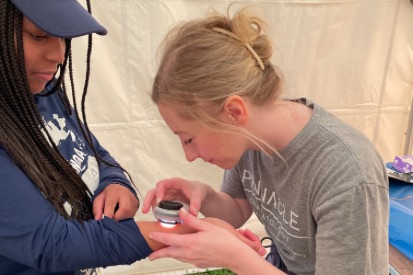
Schedule Your Visit at Pinnacle Dermatology
At Pinnacle Dermatology, we understand the importance of addressing nail fungus early to avoid complications. Contact us to arrange a consultation and take the first step towards healthy nails and skin.
Featured Products
Check your local office for current stock!
Check your local office for current stock!
Featured Blogs
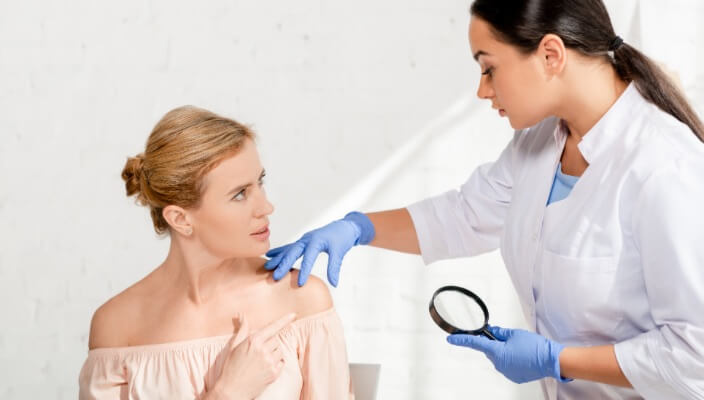
- General Dermatology
Curious if it's time to consult a dermatologist? Explore key signs and considerations to determine whether a visit to a skincare expert is essential for your skin health and well-being.
Read More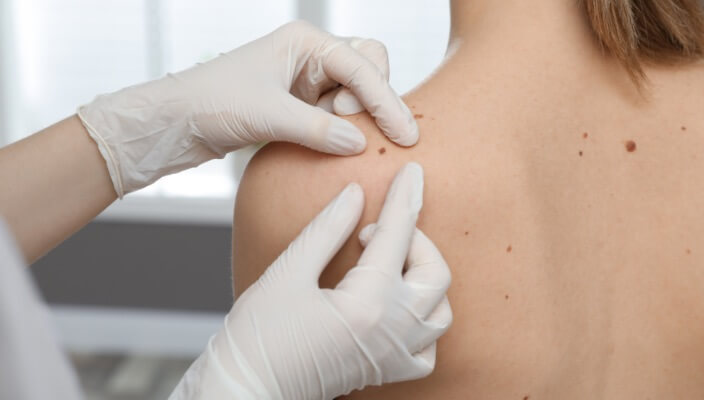
- Skin Cancer
- General Dermatology
- Skin Exams
Your skin is your largest organ and its first line of defense. Learn more about why a skin exam should be a part of your wellness routine.
Read More
- General Dermatology
Learn to identify nail fungus. Discover symptoms, differences, and prevention tips to keep your nails healthy.
Read More


